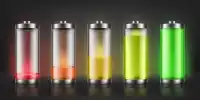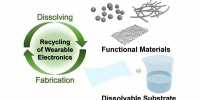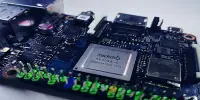Most of our devices nowadays use lithium-ion batteries. Their development is a technological marvel, but now that they are common we focus more on the negative than the positive. And the biggest downside is recharging them at least every day. Now imagine a battery that only needs to be recharged once a week. Thanks to the researchers of various organizations now that dream is nearing reality. They are focused on fluoride, which can pack much more. Now, they have been able to create the first rechargeable fluoride liquid battery that works at room temperature.
This breakthrough has been reported in the Success Journal. Previous research has struggled with fluoride for a number of reasons. 19 In the 1970s, solid-state fluoride batteries were developed, but their temperature required so high that they could not be used in everyday devices. Nevertheless, this promise was exciting enough for scientists to continue the investigation.
Co-author Professor Robert Grubbs, a Caltech chemist and winner of the 2005 Nobel Prize in Chemistry, said in a statement, “Fluoride batteries may have a higher concentration which means they can be longer – eight times longer than the batteries used today.”But working with fluoride can be challenging, especially since it’s so corrosive and reactive.”
Batteries move a certain amount of charged atoms in a certain direction, store energy, and then release it by transferring it between the electrons in a liquid solution known as electronics as a charge. Lithium ions are known as positive and cations, fluoride ions are known as negative and anion. The lead author of the study, Victoria Davis, who is now studying at the University of North Carolina, was able to find a good solvent for fluoride use. This electrolyte is known as BIS (2,2,2-trifluoroethylene) ether or BTFE and has been able to stabilize fluoride ions by successfully directing them towards the prototype.
Co-author Simon Jones, from the Jet Propulsion Laboratory, “You need to transfer more charges for a battery that lasts longer.” “It is difficult to remove multiply charged metal cations, but the same result can be achieved by removing several single-charged anions, which travel with relative ease. The challenge of this scheme is making the system work at usable voltages. In this new study, we showed that ions really deserve attention in battery science because we showed that fluoride can work at high-level voltages.” The team used simulations to adjust the electrolyte and improve both performance and stability. This is still the first day but fluoride batteries may soon become commonplace.












